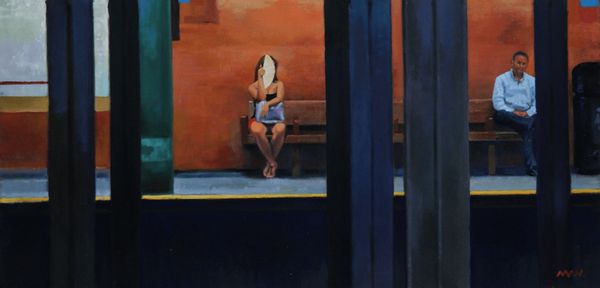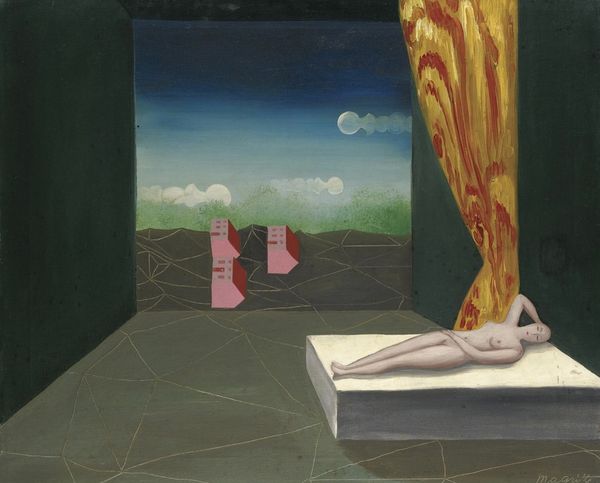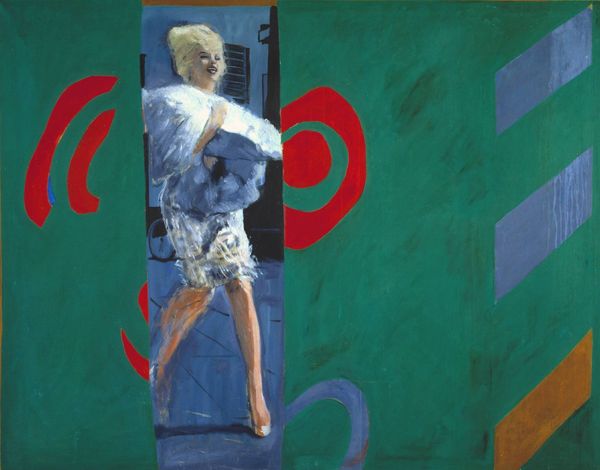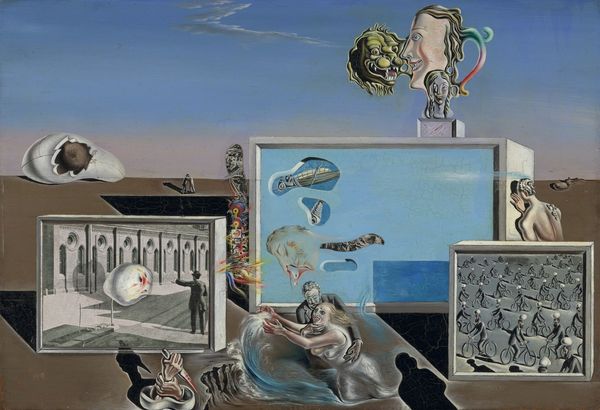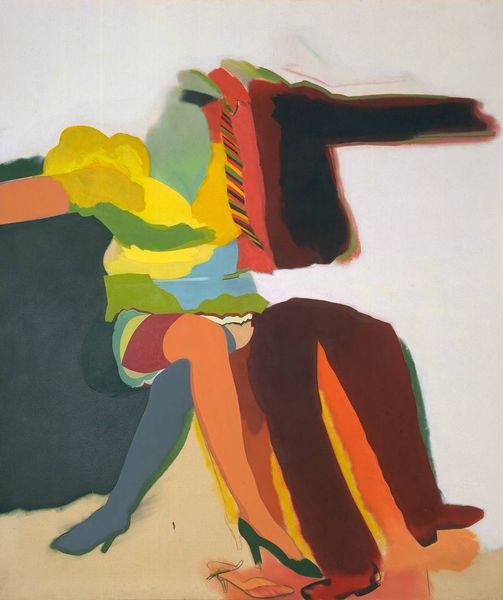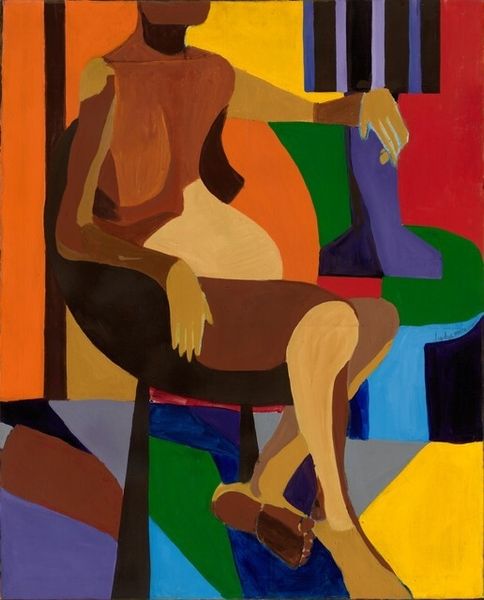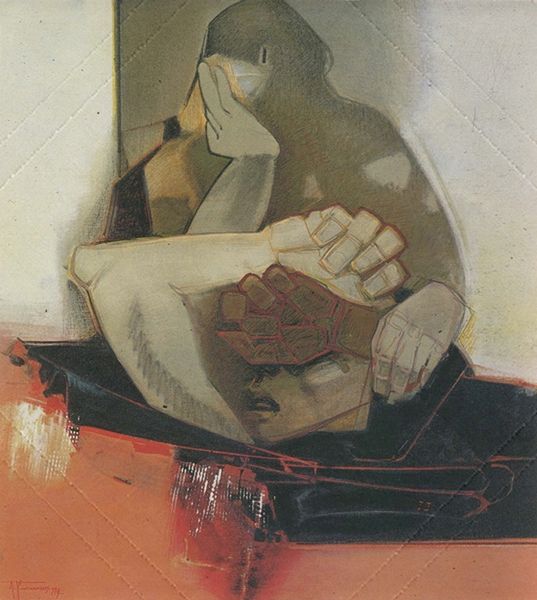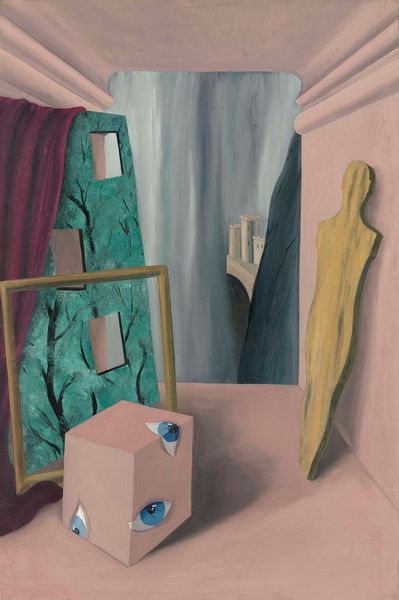
painting, oil-paint
#
portrait
#
painting
#
oil-paint
#
landscape
#
figuration
#
oil painting
#
history-painting
#
surrealism
#
modernism
Copyright: Modern Artists: Artvee
Editor: We're looking at Salvador Dalí's "La Femme poisson," painted in 1930 with oil paints. What strikes me is the dreamlike quality and the kind of isolated despair that emanates from the central figure. How do you interpret this work? Curator: It's interesting you pick up on isolation. Dalí, deeply impacted by the political anxieties and societal shifts of the 1930s, often used surrealism to explore themes of alienation. This period, marked by rising fascism and economic depression, created widespread feelings of uncertainty and dread. Do you see that reflected in the figure itself, how it merges the organic with the mechanical? Editor: I do. It's almost grotesque, with the clock where the face should be, but also strangely vulnerable. Is it meant to be a critique of something specific? Curator: Think about the cultural obsession with time, efficiency, and industrialization during the early 20th century. The clock, typically a symbol of order, here becomes a symbol of existential angst, literally consuming the figure. Moreover, the fragmented form can be seen as a reflection of the fragmented individual in the modern world, battling the increasing alienation caused by mechanization. Does that resonate with you in the landscape too? Editor: Definitely. The barren landscape with the sharp shadows amplifies that feeling of isolation, a world stripped bare. The contrast between the bright base and the bleak environment is striking. Curator: Exactly! It underlines the instability and precariousness of identity. Thinking about his wider oeuvre, the landscape could also allude to his Catalonian background and his personal struggle within a society changing at a rapid pace. Editor: I hadn’t considered that connection before. It makes me see the painting as less a personal expression of despair and more a commentary on the widespread anxieties of the era. Curator: Precisely. It highlights the intersection of the personal and the political during periods of great change. Editor: This has shifted my perception entirely. Thanks for untangling it with me. Curator: It's a pleasure to reveal the art through the prism of context.
Comments
No comments
Be the first to comment and join the conversation on the ultimate creative platform.
